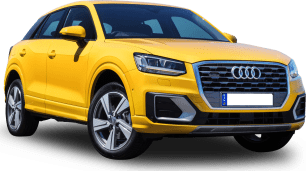The Kodiaq does a solid job of blending family friendly space with clever design. Up front, there’s plenty of room to stretch out, and the wide door apertures combined with a 187mm ground clearance make getting in and out a breeze.
The front seats are genuinely comfortable, with thick padding, supportive side bolsters, extendable under-thigh supports and heating for both front occupants, which is a nice inclusion at this price point. The driver’s seat is also electrically adjustable with memory, which adds a layer of convenience.
Skoda has a reputation for smart storage and the new Kodiaq continues that trend. There’s a sunglasses holder, an umbrella nook inside the drivers door, removable rubbish bins in each front door pocket and a handy dual glove box set-up. The centre console offers a mix of deep storage, two cupholders and lots of charging options, including two USB-C ports and dual wireless charging pads, plus a third USB-C near the rearview mirror.
That said, the tech experience hasn’t been completely seamless. The 13.0-inch multimedia display looks sharp, but the touchscreen can be laggy at times. The three multi-function dials, while clever in theory, aren’t always intuitive in practice. Changing functions on the go can be fiddly, and I found the climate control system occasionally unresponsive — the ‘sync’ function worked inconsistently and for some reason, we couldn’t always unlock or adjust the rear climate control.
On the plus side, the system includes built-in sat nav, wireless Apple CarPlay and wireless Android Auto. CarPlay connected easily and stayed stable throughout the week.
In the second row, my eight-year-old had no trouble hopping in and out, and while the seats are on the firmer side, they’re still comfortable enough for long drives. Amenities are strong with two USB-C ports, a 12-volt socket, map pockets with device holders, and retractable sunblinds. There’s also a removable centre shelf between the seats that works as a clever storage solution, and the bench is wide enough to take advantage of all three top-tether anchor points.
And I have to call out one of my favourite Skoda features, the pop-out door edge protectors! This is the first time I’ve seen them in action and they’re brilliant. They automatically deploy as you open the door, helping prevent bumps and dings, which is a lifesaver for parents with energetic kids (like mine) who fling doors open with zero hesitation.
As with most three-row SUVs in this segment, the Kodiaq’s third row is best suited to kids. Adults can technically squeeze in but space is limited, with legroom and headroom both tight. It’s worth noting there are no directional air vents, USB charging ports or top-tether anchor points in the third row either, which might be a downside for some families.
Boot space, on the other hand, is a strong point. Even with all seven seats in use, there’s still a very usable 340L of cargo capacity which, is enough for a few school bags or a compact pram. There’s also an underfloor compartment for storing the cargo cover and space-saver spare tyre, which keeps things tidy. Fold the third row down and the capacity jumps to a generous 910L, giving you loads of room for family gear, groceries, or weekend luggage. The powered tailgate is another welcome convenience, especially when your hands are full.






